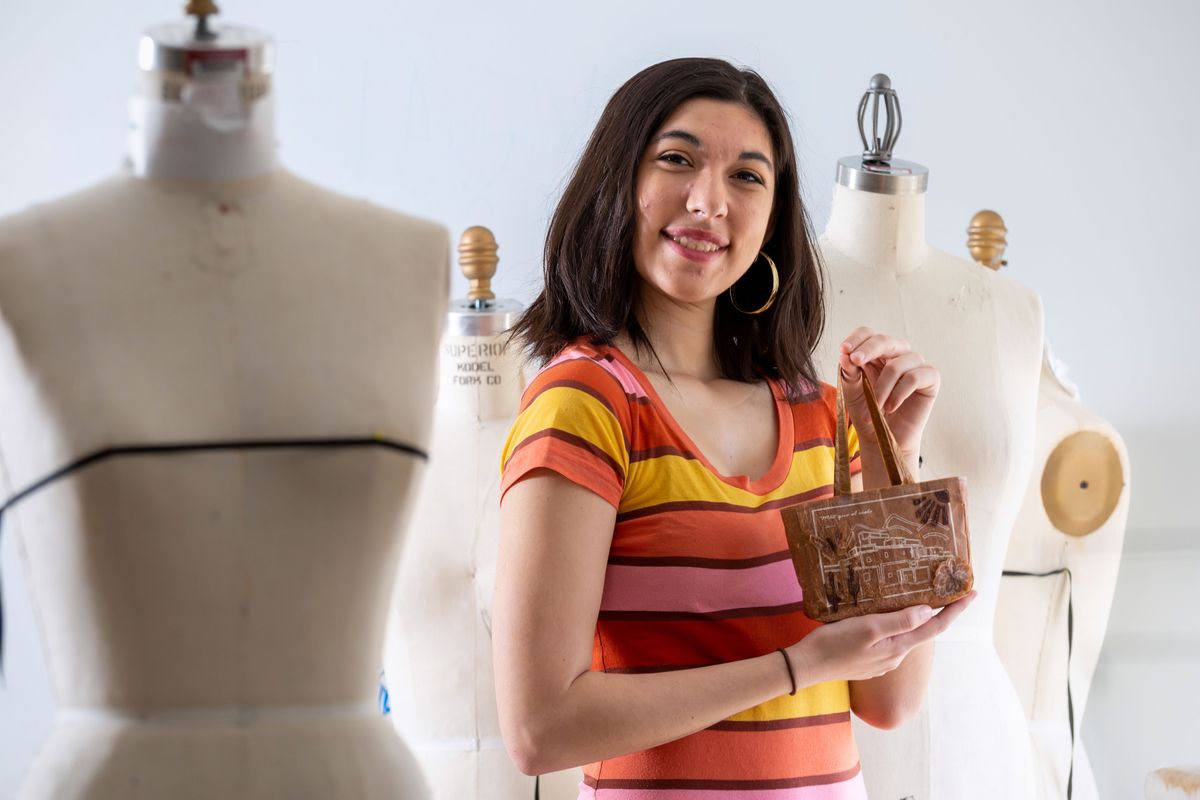WSU student makes handbag out of fermented kombucha; practices sustainability

Rowena Gonzalez practiced sustainability most of her life.
Gonzalez became interested in fashion at a young age, when she would take her hand-me-downs and modify them to fit current trends. Now, she is in her second year in Washington State University’s Department of Apparel, Merchandising, Design and Textiles program.
Through the IGNITE undergraduate research program, Gonzalez created a sustainable fashion product, with the help her mentor Armine Ghalachyan, an undergraduate professor in the AMDT program.
“In the program you get to decide your research focus and I had a lot of different things I wanted to focus on, but one of my top priorities was sustainability,” Gonzalez said.
She decided to use dried kombucha, which mimics a leatherlike material, to create a purse. Then she dyed the fabric derived from the fermented drink and etched designs onto the bag.
After researching different methods and materials, Ghalachyan showed Gonzalez a handbag she made in 2018 out of fermented kombucha.
“I immediately wanted to know what kind of process she went through to create this,” Gonzalez said. “And so she’s like, ‘Well, do your research first. And then we’ll work on producing it.’ ”
They worked on creating a small prototype of a handbag that would be made out of fermented kombucha. The pair used around $500 from the IGNITE award to purchase the products, and it took four weeks for the film to grow on the kombucha. They pressed the kombucha for an additional week after that so it could be completely dry.
“It’s a gelatinous substance that is full of water so when it dries the thickness reduces to probably 10% of what it is when you harvest it,” Ghalachyan said.
After the product was dried out, they experimented with dyes for color.
“We used red onion skins, which gave us a darker purple. It’s kind of like a darker red, kind of a Bordeaux color,” Gonzalez said. “We actually didn’t have to dye a lot of the material because it gave us the desired kind of rustic, natural color that we wanted.”
When it came time to design the product, Gonzalez decided to draw inspiration from the Pueblo culture, which is part of her family’s history.
“In Pueblo culture, basically it just revolves around the concept of sustainability and it utilizes natural materials in environmental surroundings for tools, houses, medicine and dyeing clothing,” she said.
The designs on the handbag represent symbols significant to the culture. There is a dahlia, which is the national flower of Mexico, and a butterfly that represents the souls of the deceased. In the background is the engraving of a classic Pueblo village.
Ghalachyan and Gonzalez are figuring out how long the bag will actually last. Ghalachyan’s bag that she made in 2018 for her dissertation is already aging, with the material whitening and drying up.
“I compare that to leather,” Ghalachyan said. “We don’t immerse leather in water, so we don’t really have to immerse this material in water. So probably one of the next things will be to actually compare this material to leather and kind of do the same testing processes.”
The prototype is a year old, and Gonzalez believes it is in good condition.
Gonzalez presented her research during the Showcase for Undergraduate Research and Creative Activities on March 27 at WSU. She won the second-highest award in the arts and design category. Gonzalez also received a grant from the American Association of Textiles, Colors and Chemists to help with her future research.